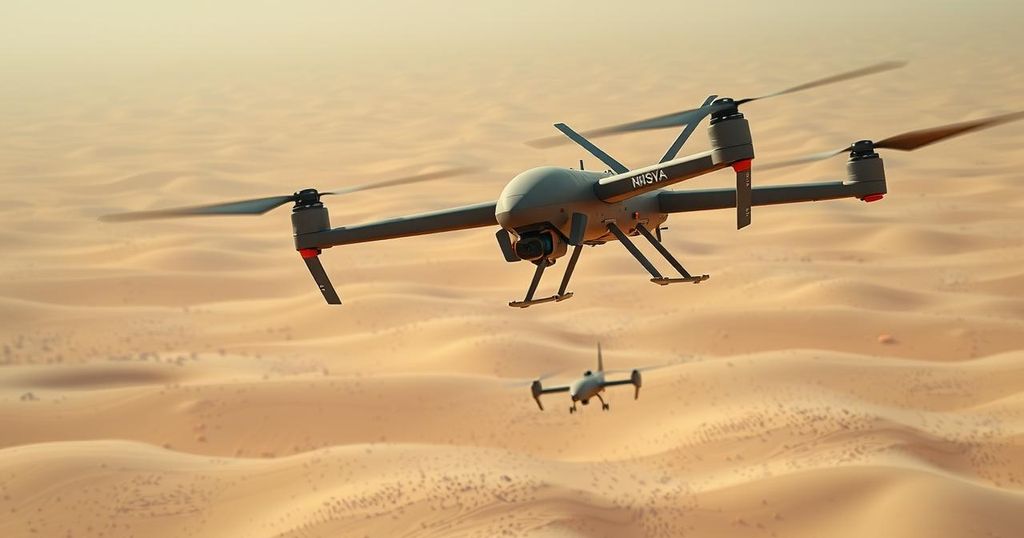The Impact of Russia’s Drone Warfare on Global Military Strategies

Russia’s drone capabilities are advancing as observed in their recent operations in Kursk, which have implications for Middle Eastern conflicts. The BBC report outlines how drones have shifted the balance of power, resulting in challenges for Ukrainian forces. The situation reflects a pattern wherein drone technology and tactics are reshaping military engagements globally.
Russia is notably advancing its capabilities in drone warfare, particularly illustrated by developments in the recent conflict with Ukraine. A BBC report highlighted Ukraine’s withdrawal from the Kursk area, where Russian drones significantly influenced the combat dynamics. This incident marks a turning point, indicating that Russia’s drone strategies may reverberate beyond Ukraine, potentially impacting conflicts in the Middle East, specifically regarding Iranian proxies targeting Israel.
Since the onset of the conflict in 2022, Russia has adapted its military tactics, prominently utilizing Iranian Shahed kamikaze drones against Ukraine. Initially not pivotal, these drones laid the groundwork for their usage by Iranian-affiliated groups in assaults on Israel following the Hamas assault on October 7. Consequently, insights gathered from the situation in Kursk hold substantial implications for military operations in the region, where technology and tactics frequently evolve.
The BBC analysis reflects the effective military strategies employed by Russia. By deploying tens of thousands of troops and executing coordinated attacks, Russia successfully overwhelmed the Ukrainian defenses, leaving Kyiv dependent on a singular supply route. This vulnerability echoes historical parallels, reminiscent of the Iraqi army’s retreat from Kuwait, characterized by nighttime evacuations and the abandonment of equipment.
Ukrainian soldiers identified a critical disadvantage in their drone capabilities, once under the perception of superiority. The revelations portray the significant advantages Russian forces have gained through superior numbers and more precise air strikes. A poignant statement from a Ukrainian soldier highlights this shift: “We used to have an advantage in drones. Now we do not.” The pervasive presence of Russian FPV drones significantly contributed to their operational success.
The strategic deployment of drone swarms has proven effective in the Kursk battlefront, facilitating continuous surveillance and assault on Ukrainian troops and equipment. The patterns witnessed in this conflict parallel previous tactical successes, such as Azerbaijan’s utilization of drones in their engagements with Armenian forces. Notably, the application of fiber optics in drone operations has emerged as critical, as it provides resilience against common jamming techniques.
As military strategies continue to evolve in Ukraine and the Middle East, the pressure to acquire advanced drone technologies and defenses increases. The lessons gleaned from the battle in Kursk underscore the necessity for technologically advanced militaries like Israel to remain vigilant and responsive to emerging threats. Observations indicate that adversaries are learning from each engagement, adapting their approaches in real-time to enhance their combat effectiveness.
In conclusion, the evolving landscape of drone warfare exemplified by Russia’s tactics in the Kursk conflict highlights significant implications for military strategies across various regions. As Russia showcases its growing dominance in drone operations, particularly through the use of Iranian technology, it sheds light on the need for nations, including Israel, to continually adapt and enhance their military capabilities. The ongoing developments serve as a reminder that technological superiority and adaptive strategies are essential in modern warfare.
Original Source: www.jpost.com








